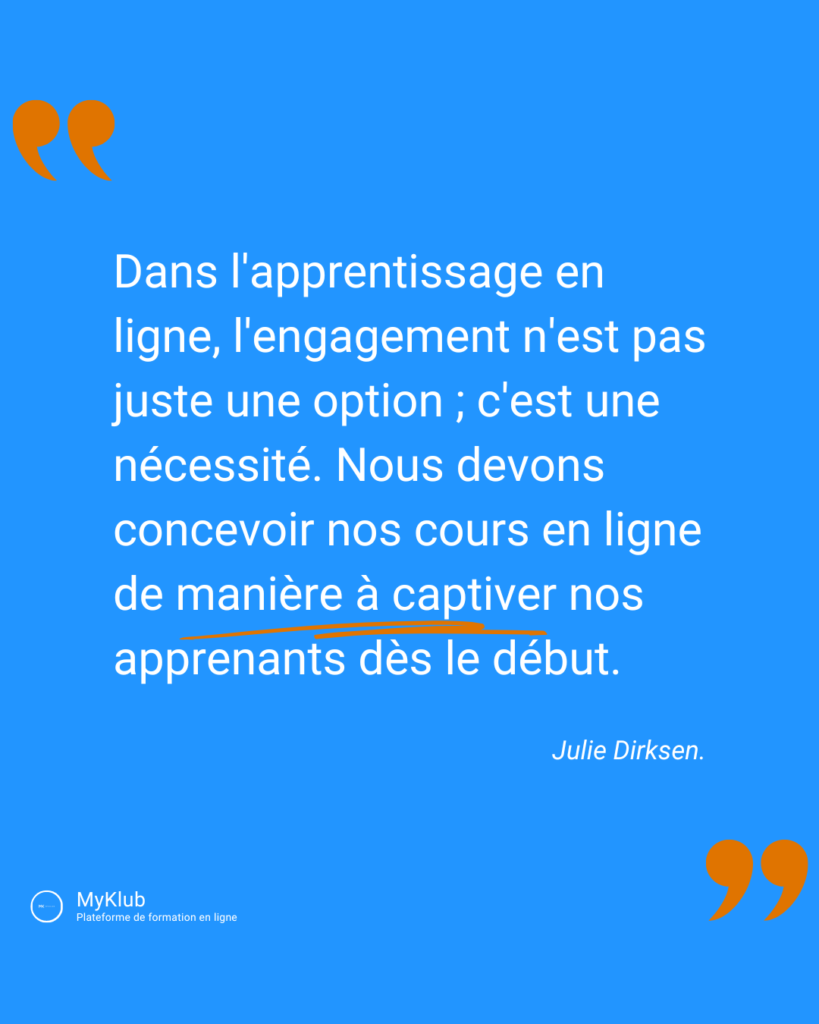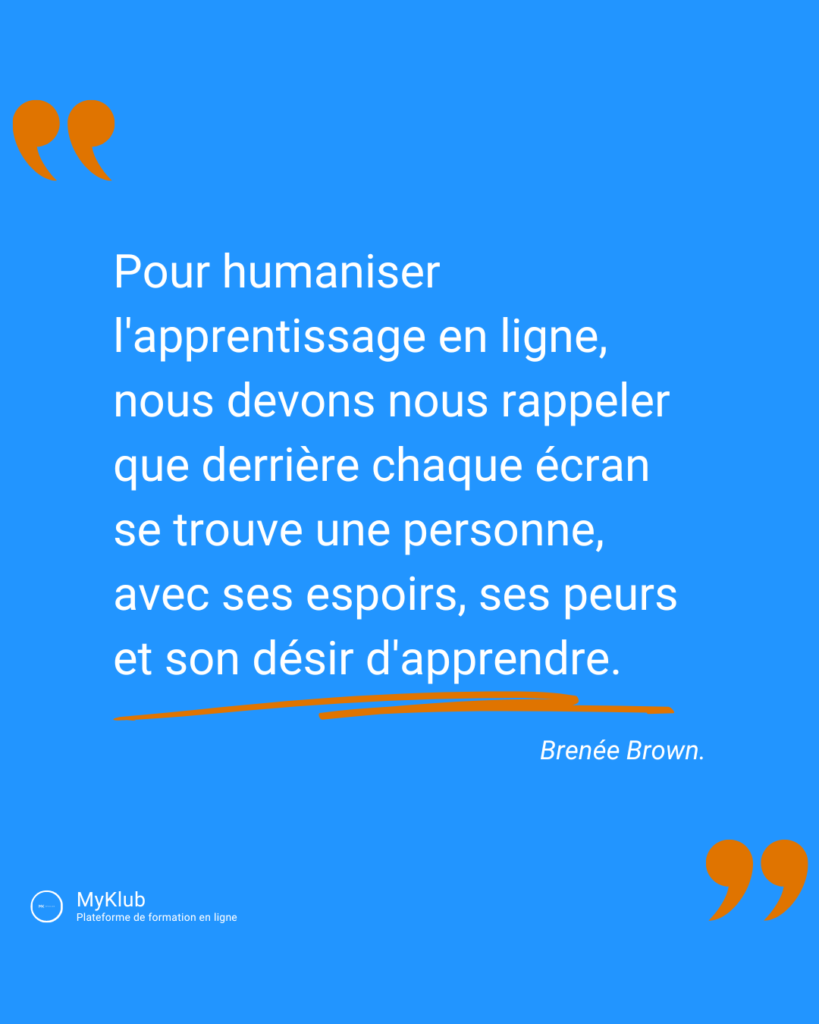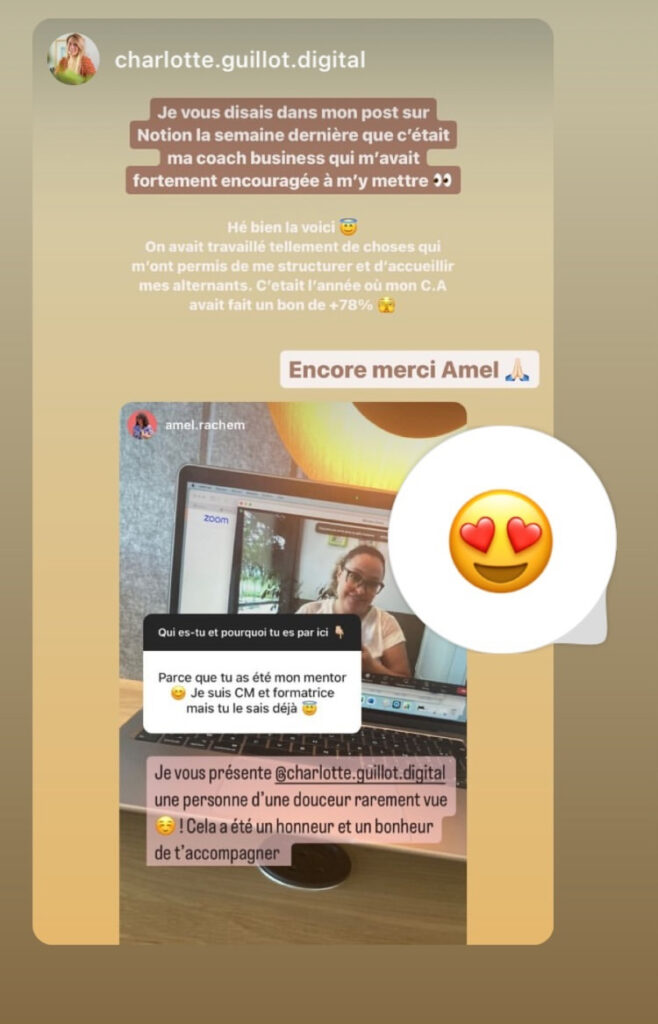Did you know that around 80% businesses fail before their 5th year of existence? This statistic haunted me for a long time, but it also fueled my determination to make Myklub an exceptional success. And today, I share with you the story of these 5 crucial years which forged me, Amel RACHEM, co-founder and CEO of Myklub, in the unforgiving world of the web. Find out how I was able to create my first online training course.
My journey : Since 2009, I have been navigating the world of online coaching, armed with an unwavering passion for teaching and support. In 2018, I took a new step by integrating training into my offer, faced with the lack of adequate tools to combine efficiency and professionalism. This is how the idea of Myklub was born.
The heart of this article: I'm going to explain to you why it took me so many years to launch my first online training course. The challenges, the doubts, and most importantly, how I turned every obstacle into an opportunity. My journey is not just a success story; it is a lesson in resilience, innovation and humanity.
What you will learn: No pretense here. I promise you an immersion in my experience, concrete lessons that you can apply to your online training and coaching project. And thus continue to chart your path towards your own success. So ready to discover my path to creating my first online training?
In this article's summary
TogglePart 1: Initial Challenges
When you want to create something new in your business, there are a whole bunch of things going on in your mind. And every time, personally, I go through it too. I'm still trying to get used to it at this stage but it's hard every time.
It's difficult because any change requires effort and new actions. And that causes discomfort. And as an entrepreneur I have since learned to juggle and live with discomfort. Besides, I really like this saying from Bob Proctor who says that we must learn to be comfortable with discomfort. And it’s true because that’s also what being an entrepreneur is all about.
So what are the challenges and questions that arose in my mind when I wanted to create my first online training course? I tell you EVERYTHING!
I felt three main fears:
1. Fear of losing quality :
I have always loved excellence and perfectionism is my ally (and my enemy some days, for those like me, I think we understand each other).
So considering switching from face-to-face training to online training was almost impossible for me.
I am in detail... yes, to the point where I ensured that every minute my learners spent in my training room was a powerful experience and an opportunity for them to transform themselves.
So how do you translate this online? No… impossible, I thought I would lose quality, it was undeniable.
A question therefore persisted in my mind: how to welcome each person in training with particular attention on the web? How can we give him an experience of (trans)formation?
At that moment, I told myself that it could never be the same. NEVER so loud and never so immersive
So I ended up postponing the creation of my first online training month after month.
2. Fear of lack of humanization :
I started my career in difficult neighborhoods in the Paris suburbs. I first worked as a community center facilitator then I obtained my specialist education diploma. I worked with young people in difficulty for almost 15 years before becoming an entrepreneur. As part of my missions as a social worker within the protection of children in danger, I worked with highly qualified profiles and in close collaboration such as children's judges, directors of social assistance homes, psychiatrists and psychologists. So when I managed my files sent by the children's judge and the support of these families, I liked to get in touch with them, to break the ice or rather the wall that they erected in front of them to hide their sorrows and their daily pain. . And this often took place through an informal discussion over fruit juice.
Then when I launched into entrepreneurship I also sought to maintain this close link with my clients.
And as a coach I loved being face to face with clients. It is in these moments that we can detect all the non-verbal language, all the energy that is released in the room, etc. At that moment, I was convinced that this feeling could never be found online.
Coaching remotely: a necessity
It is true that I had already started to change the way I worked as a coach.
So I had already started a first shift towards remote work.
To tell you the truth, in 2012 I started to have a recognized name as a family coach and I received requests from all over France and even from all over the world. So here I had to rethink how I could offer the same quality of support but remotely.
Then during my online coaching, it took me years before changing the way I worked by adjusting my posture and my listening in order to find this balance that allowed me to feel.
As for face-to-face training, I liked using the energy of the group to help everyone achieve their goals. As I told you above: I mastered my schedule perfectly during the face-to-face training. Everything was thought of: the games, the welcome and the educational sequencing.
The strength of group energy:
Being trained in human psychology, sociology and helping relationships, reception allowed me to position the learners in the room in such a way that they all had an enriching training experience. Because the “shy” will look very good next to the “joker” for example.
For your information, here is an image that clearly represents the behaviors and roles of learners in training, according to the classification of the room called Snow White and the 7 Dwarfs:

I would also like to share with you here a widespread belief: think that distance learning would be less relevant and impactful than face-to-face teaching.
We therefore tend to think that when we have a client alone in front of their screen, they will be less engaged and will not complete their online training. In 70% cases this is true. But we must also be interested in the 30% of those who follow through. We'll talk about it further down in the article, don't worry.
3. Fear of losing the beautiful connection with customers :
I met my clients at meet-ups in Paris, at seminars in which I was part of the panel of speakers and during very conventional meetings too.
Then bonds are forged over time because certain people like to confide in me and share their successes with me… successes resulting from advice that I have given during speaking engagements, for example.
And like the good French that I am: we all had lunch together with my learners in training. This was included in the training price and lunch. We were able to create friendly relationships that become lasting over time.
How to do this live during a webinar?
How to do this in a zoom training session?
How to do this asynchronously?
The die-hards (of which I was one) would say: impossible, it will never be the same.
Part 2: Overcoming fears
I had a particular training course that worked very well and I was asked to deliver it all over France at the time and I was starting to (yes I dare say it) get tired of repeating myself… but I wanted to continue providing it because I appreciated the content, I am an expert and above all it was really useful. This training was a real game changer for my clients. This is what allowed them to have a business capable of paying them.
So I rolled up my sleeves and overcame my fears one by one to transform my in-person training into a real online program. This is the birth of how I was finally able to create my first online training course.
1. Strategies adopted to maintain quality :
It's all well and good to want to transform face-to-face training into online training, but it's a real andragogical approach (editor's note: andragogy is pedagogy for adults, because we don't learn like children do). When I decided to create my first online training I absolutely wanted to provide high-level content. I had trained in andragogy.
So to maintain a high level of quality and obviously customer satisfaction I had to think about things differently. I had to create an online program that would allow real transformation as was the case in person.
Here is my roadmap to begin this in-depth work:
1st step :
I resumed my program and the sequencing of the training. I have it in table format. I added a column to this table to note how to transform each stage of the learning journey.
2nd step:
I scripted everything to create my first online training… yes at the time I wasn't very comfortable with the camera so having a script with great slides that scrolled was great for me.
I created each module with the micro-learning format. For me it is the most effective way of training for adults in the context of online training.
3rd step:
I added quizzes at the end of each module in MCQ format. MCQs allow you to do what we call chunking: encoding. It is not to evaluate strictly speaking but it is to create a fairly simple quiz which allows the learner to repeat the most fundamental notions. This process thus makes it possible to anchor the learned content in long-term memory.
4th step:
I created an additional evaluation to those that existed in person. It is an online assessment which puts me in touch with each learner and which allows me to check whether the training content is well understood and put into practice. It’s also a way to connect and personalize the learning journey.
5th step:
Educational resources. In person I delivered a paper and bound support but it was not suitable for e-learning. So for each module and each module course I created a resource to download. And no, please, stop giving out your slides, it’s useless!
Instead, create a course sheet, an infographic or a mind map. It will be much more effective.
Then at the end of the module I put a summary with a pdf compilation of all the resources from this same module.
Disclaimer: when I see web gurus say “you can create your training in 24 hours” I find it astounding and so abusive… Well, it must be possible when you offer amazing things**
“In online learning, engagement is not just an option; it is a necessity. We need to design our online courses in a way that captivates our learners from the start. »
Julie Dirksen, author of “Design For How People Learn.”

2. Humanization of online teaching :
One of the challenges of online training is the humanization of the course. But not only. You also have to think about personalization. To humanize the online teaching process, you have to think humanly (note to self: Ok Amel, you can formulate that better anyway). To humanize the online teaching journey, you need to think about each individual who will trust you, taking into account their uniqueness.
What does a human want? Feeling listened to and supported. This is the basis. If each learner feels that they can express themselves and that they will be heard, if they feel the need they will do so.
How did I set this up?
I had written an email that I sent to each new learner. This one was long and full of details. The emphasis was that I never leave anyone on the side of the road, EVER.
I made myself available and accessible even if I welcomed several hundred learners to my training each year. And you know what ? My clients knew this and greatly appreciated it.
“To humanize online learning, we must remember that behind every screen is a person, with their hopes, their fears and their desire to learn. »
Brene Brown, researcher and author on vulnerability and courage.

Ok, concretely, what was I proposing?
- Training support via messaging integrated into the platform. So everyone could ask their questions and get a quick and personalized response.
- A video FAQ from me every week : I took the questions that deserved to have a common and useful answer to other learners. And the person who asked the question also received the answer expressed in video by messaging.
- I countered my fear of the camera and I added videos of lessons in front of the camera. Diversifying the formats helps keep our learners' attention and they loved seeing me (because along the way I countered my fear of the camera and made face cam videos). Some even said they felt like they were in my presence. Bet won!
Charlotte, enrolled in my 'Success Makers Academy' program, encountered difficulties with the development of her community management business. After receiving our welcome email, she felt encouraged to share her concerns. Our personalized responses, including additional resources and Q&A sessions, not only helped him overcome his blockage but also increased his engagement in the course. She ultimately successfully completed the program, highlighting how instrumental our support was to her success.

3. Preserving the connection with customers :
As you may have read above, I had put in place initiatives to maintain and strengthen links in a virtual environment.
The only thing they didn't have compared to face-to-face training was pastries and welcome coffee in the morning. Yes I know it’s a terrible loss 😝.
To create a group dynamic at the time I created a Facebook group. Its aim was to create a caring dynamic of mutual aid and support and you will believe me or not but it was incredible. Mutual aid, support and partnerships were born through this group.
And I remain a person who thinks of the Other, so I sent emails to my learners. These emails were obviously personalized according to their evolution in their transformation journey. I sincerely heard from my clients during their journey.
“The quality of online education is measured not only by course content, but also by the ability to create an interactive and supportive learning community. » – Dr. Tony Bates, educational technology expert and author.
Part 3: transformation and success
1. Impressive growth :
You should already know that creating my first online training allowed my business to enter a phase of impressive, if not incredible, growth. I quickly went from €60k in turnover per year to €350k while remaining almost alone to manage everything.
It is not a myth that it is possible to earn more without working more. I haven't worked more hours than usual.
Certainly, I added considerable work time in strategy and marketing. But I no longer wasted time on the TGV to train in the four corners of France. So all in all I was still working the same amount of hours per week.
2. Removing limiting beliefs :
This experience quickly allowed me to no longer be subject to many limiting beliefs of which I was my own victim. We lock ourselves into patterns that prevent us from achieving what we sincerely want for ourselves. And that's a shame.
“Yeah, I’m a grassroots girl,” I kept repeating to myself. The time when I was a street educator had still left some traces on me.
When it was necessary to create a bond to have a beautiful connection with others, you had to see each other face to face. Having coffee together… well I told myself I was going to lose that and I was sad about it.
But I still decided to start online training. And when I got the first customer feedback, I went even faster.
My beliefs had gone up in smoke. My clients were satisfied and even told me how incredible they found the training experience they had with me in my online program.
The bet was won, so these beliefs no longer had to exist.

3. Geographic freedom and family impact :
I know that for many it's a dream and for others, it's cliché: my web business is what made it possible to launch a long-standing family project. We dusted it off and implemented it.
We have been expatriated to Mauritius since November 2020. And it’s thanks to online business. No more geographical ties. We could finally live wherever we wanted.
This expatriation offers us so much on a daily basis, whether it is for me, the children or my husband. Moreover, if the subject interests you, we have a dedicated YouTube channel: here is the link to our channel Zimmigrants.
Our children are flourishing day by day and this continues after years. They have friends of all origins and from distant countries.
They speak English, my daughter is almost bilingual. And the variety of activities they can do is great.
But the biggest change in our family is also that experienced by my partner. Marouane was an executive at SNCF. Great job, good pay, company car and so on. So leaving employment was not easy. Even more so when you are a father and you have this responsibility on your shoulders. With this departure abroad he dared to take the plunge. He had always dreamed of it. Becoming an entrepreneur was for him a dream that finally came true…
As with my online business and my training and coaching programs were appreciated, we were free from want and he could get started without financial stress. Time to find your first customers.
Part 4: Lessons Learned and Tips
During this five-year journey to create my first online course, I learned several valuable lessons that I want to share with those who might be hesitant to take the plunge:
- Quality takes precedence over quantity : Investing time and effort to ensure the quality of your online training is essential. This involves rethinking and adapting your teaching methods for the online format without compromising excellence.
- Humanizing online training is possible and necessary : Using tools and methods to create an authentic connection with your online learners builds engagement and the impact of their learning.
- Fears are surmountable obstacles : Every fear I faced and overcame brought me closer to my goal each day. Facing your fears can open doors to unexpected opportunities and significant growth.
- Flexibility and adaptability are key : Being open to learning and adapting along the way is crucial to success in online teaching and coaching.
- The importance of community : Building a community around your training can not only enhance the learning experience but also create lasting connections and support the long-term success of your programs.
“The biggest challenge for online education entrepreneurs is not technology, but their own fear of failure. Overcoming this fear is the first step towards success. »
Eric Ries, author of “Lean Startup”.

Tips for future online training creators :
- Start small, but dream big : Don't let the fear of failure stop you from starting. You can always adjust and improve your offer over time. As the saying goes, an entrepreneur is like a person who jumps out of a plane and builds his parachute in mid-fall.
- Listen to your learners and your customers : Their feedback, whether positive or negative, is valuable for constantly improving your training. You will be able to improve the negative aspects and increase satisfaction with the positive aspects.
- Invest in your professional development : Learning new teaching methods and techniques can enrich your training offer. Be open and be at the forefront of what is being done. Today, delivering online training without support and personalization is no longer possible, for example.
- Don't underestimate the impact of technology : Use online tools to enrich the learning experience and make your training accessible to a wider audience.
Conclusion :
The journey to bringing my first online training into the world was strewn with pitfalls, but also illuminated by great successes. This adventure, beyond transforming my entrepreneurial approach, has profoundly modified my vision of adult education and support engineering.
The most valuable lesson I learned from this experience is that embracing your fears is actually opening the door to a world of endless opportunities. Yes I have a very law of attraction side in me 🥰.
And yes, the path was littered with doubts, questions, tears, but each obstacle overcome brought me closer to a more accomplished version of myself and my business.
I share my story with you, not to boast of a flawless journey (I am far from it), but to show you that behind the uncertainties and hesitations lie the keys to personal and professional growth. Creating my first online course wasn’t just a product; it was a reflection of an inner journey, a quest towards a better version of myself and my offer of excellence. This quest which allowed me to create my first online training course was only the beginning of a great online adventure.
But this is only the beginning of the story. In a future article, I will reveal to you behind the scenes of the growth of my turnover: how I sold my online training courses. I will share with you my complete marketing strategy, tips and mistakes to avoid to help you achieve your own successes.
Get started!
So, to you who are reading these lines, who perhaps doubt the relevance of launching your own online training or coaching program, I challenge you: go into the unknown. Leave hesitation behind, and see each fear not as a hindrance, but as a springboard to your success.
I invite you to come and discover Myklub, to draw inspiration from our journey, but above all, to start writing yours. Because in the end, it is by sharing our knowledge that together we create a world where knowledge sharing and support have no borders.
Believe in your dreams, believe in your plans. The world is waiting to see what you have to offer.
This article was written by Amel RACHEM, co-founder and CEO of Myklub.






